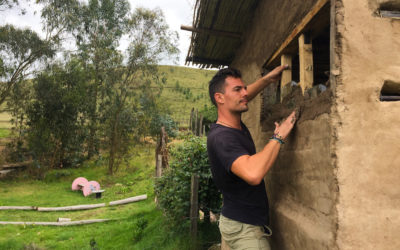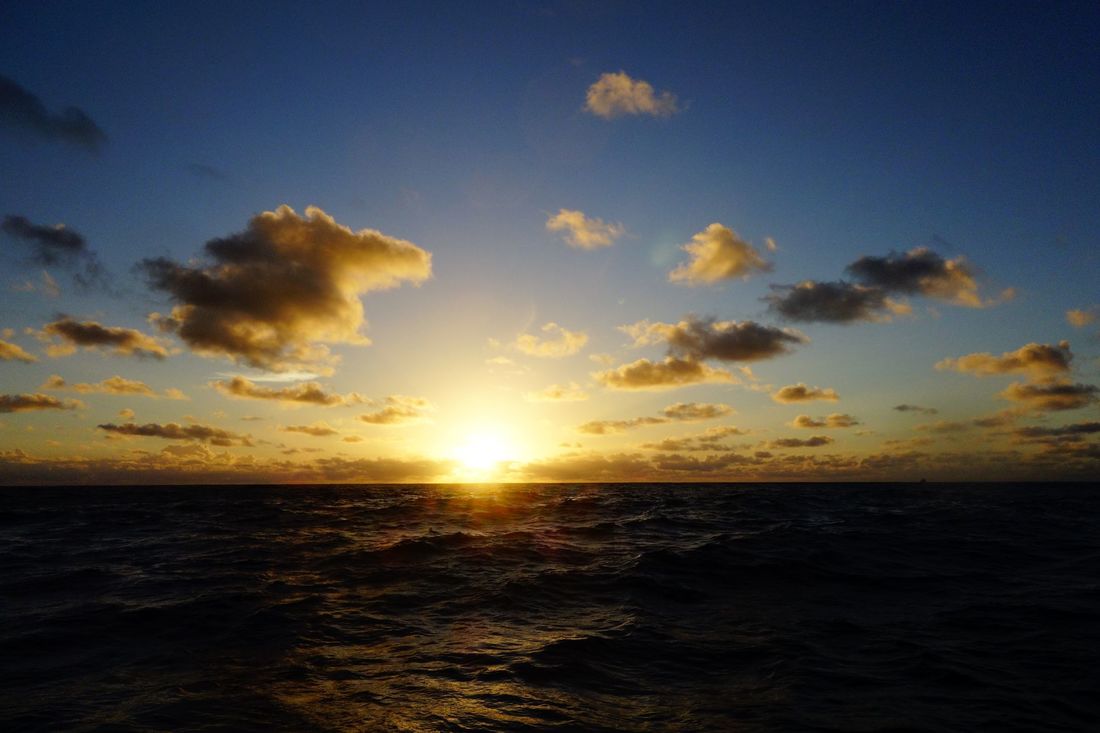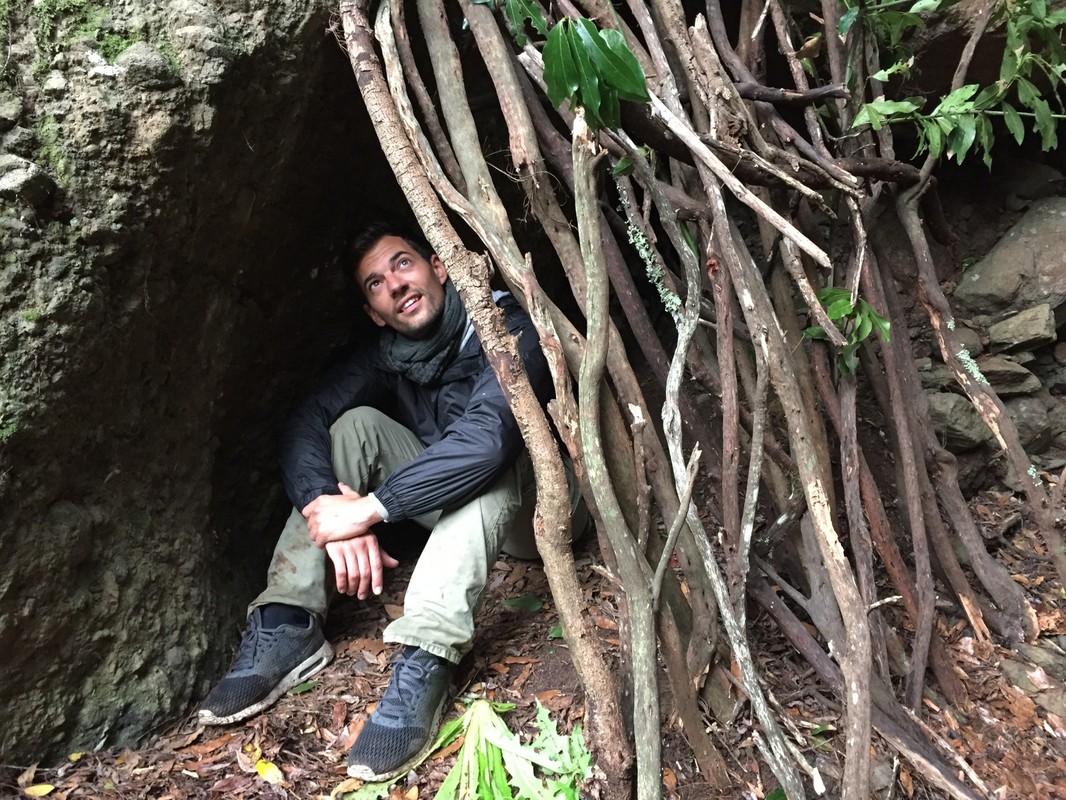Imagine an area of Colombia, where locals look at Gringos like they have never seen a white person before. For some of them this might actually be true. La Guajira, the desert region in the north-east of the country, has not seen many tourists so far. They started coming 1,5 years ago and are now discovering the area slowly. Those who come, can get lost in a whole different side of Colombia.
In the middle of nowhere
Small trees and bushes grow in the orange sand of the parched desert landscape. The further eastwards we drive the bolt upright road in our Hyundai Tucson, the more arid the vegetation becomes. Cows and sheeps and horses and donkeys stand along the roadside trying to find some eatable leaves. The animals don’t seem to belong to anybody, but are dreaded to cause a lot of car accidents, our driver Jul tells. Every five or ten kilometers we pass a person. A child holds a monkey on his hands, trying to sell it as a pet. Another one sits in the sand and repairs his bike. Every now and then roadsigns point to the left, it’s just that there is no roads. „Comunidad de Mucha“ says one – a community of Indios lives here somewhere in the nowhere. The surreality of the moment gives us a good impression of what is yet to come.
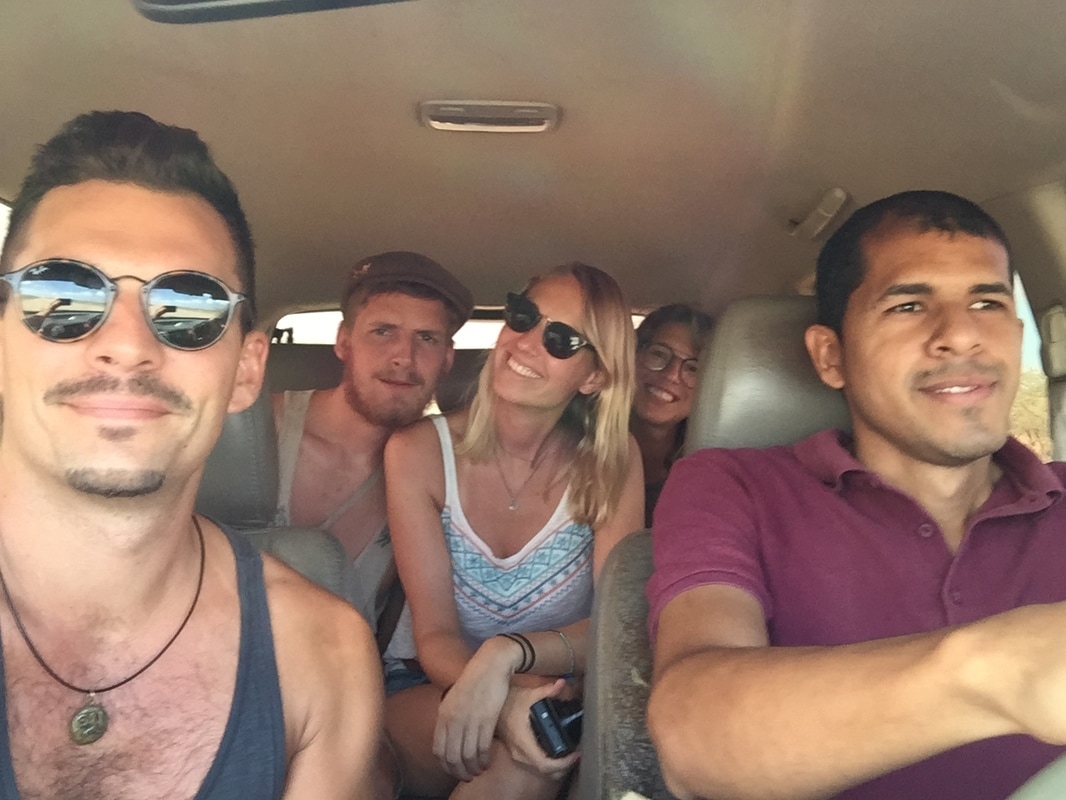
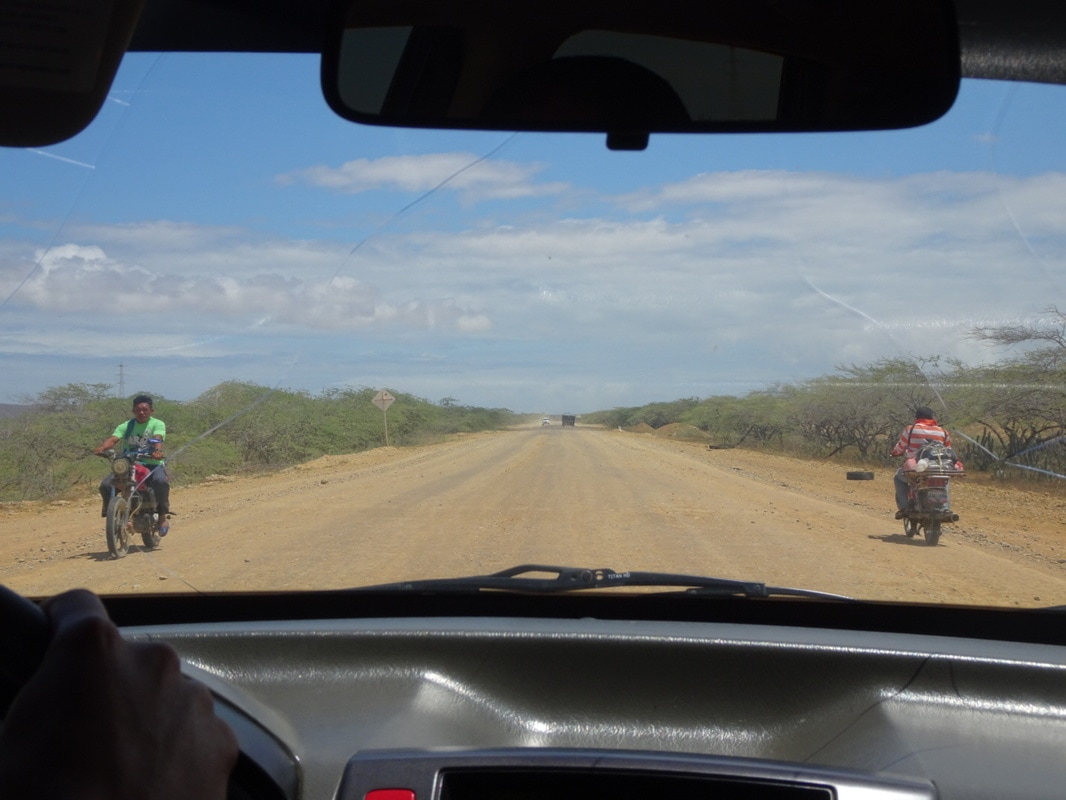
Endless streets and broken windshields. Bienvenidos al desierto. (Photocredit: Renske Klijnman)
Colombians love music
Here on the Caribbean coast in La Guajira they die for Vallenato. That’s cheerful, energetic folkmusic. A rapidly played Akkordeon owns the main role, not least important is the singer who tells his fans about broken „corazons“ and lifelong love – as folk music singers perhaps do in every country of the world. It is when another love story is just about being told when we arrive in Uribia, the last town before the road ends and the serious desert starts. A bus terminal grabs my attention – nobody is there. Jul helps me understanding: „They built it in case more people, especially tourists, use busses to get here. But no busses come yet. It’s easier to fill a pickup with people than a whole bus.“
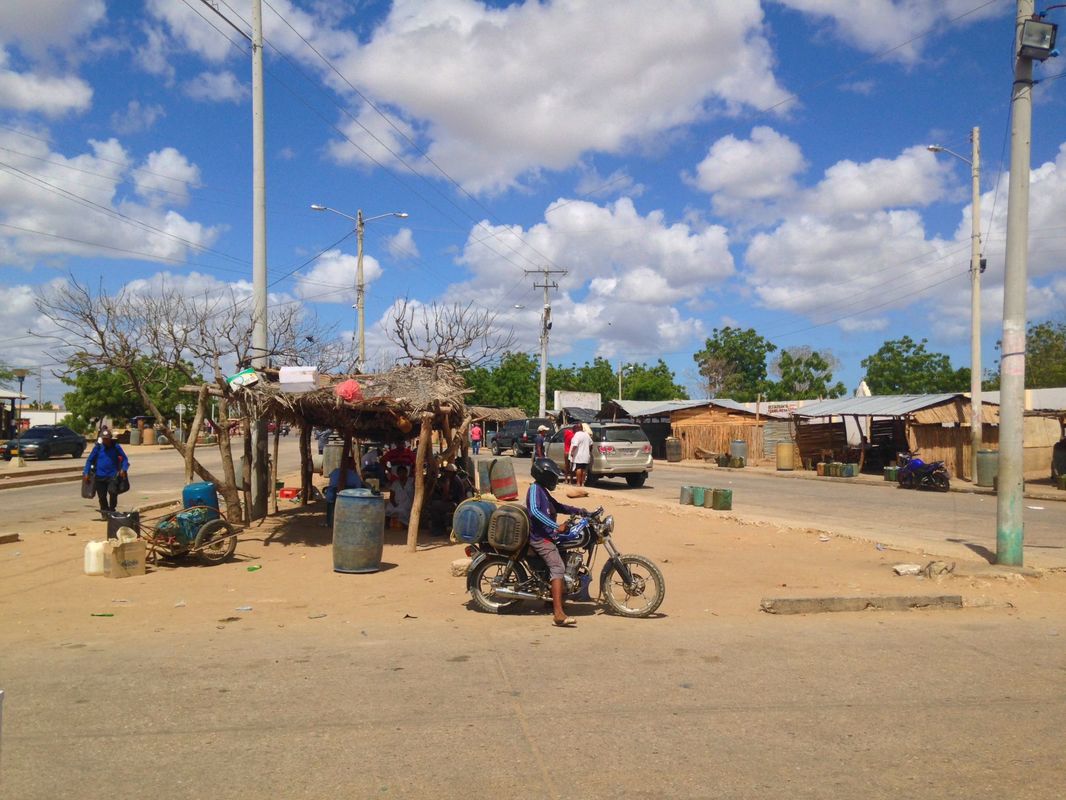
The last stop before the desert starts: Uribia
Uribia is filled with hot air and strange smells
As I walk around the corner to pee, I am all of a sudden standing on a dump, stocked with plastic rubbish and feces. It smells badly. Horses and motorbikes and cars pass by, we buy some water for the „Children of the desert“, Jul gets some plastic bottles of gasoline and off we drive. The road to Cabo de la Vela is a bumpy track with wholes in the ground and orange sand and spiky stones. The dynamic Akkordeon of Jul’s Vallenata music is now drowned by the creaking of the shock absorbers and stones shooting constantly on the windshield, which had already been seriously damaged by them before. Every now and then a bursted tire give evidence of how exhausting this environment is for people and material.
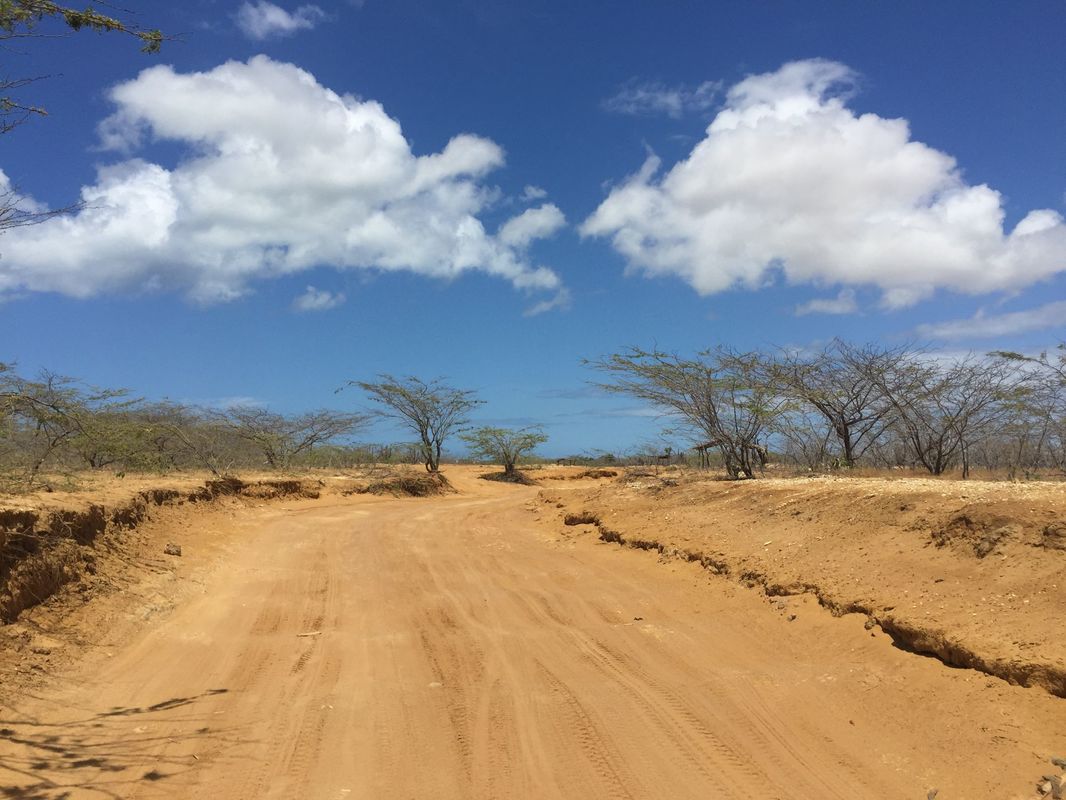
The „Children of the desert“
A fast moving vortex pulls sand high up in the air when we saw a child of the desert for the first time. The Indios living in this area in small shelters of wood and clay and roofs of palm leaves send their kids to the street to beg for stuff. Since tourists started to visit the desert one year ago, the kids have learned that this is a rewarding thing to do. Gringos, who are coming in strong cars from a world they don’t know anything about, owning much more than themselves, giving them stuff they need – candy, water or coins. When we were told about these children beforehand, we were torn whether or not we should be part of this education – there are more sustainable things for small children to learn than that. But who are we – the visitors – to judge? And what would be the alternative? Not bringing anything? Their strategy is to block the road with a rope they are holding. Actually it would be quite easy to drive around, some drivers don’t even care and break just straight through, tear the rope out of the kid’s hands. We bought around fifty small bags of water – yes, water is delivered in plastic bags here – to give it away. That’s a gift for people who only drink saltwater as there is no fresh one. It made them happy, at least that was what we were telling ourselves. In fact, I know way to little about their lives to tell anything about their emotions. And by times I felt guilty. Is it us visitors just calming our conscience by giving away things that cost us almost nothing? If we really care, shouldn’t we try to learn more about them and understand their issues?
Is environmental protection a first world problem?
My Spanish is meanwhile good enough for basic conversations, but certainly not for profound discussions about Indio lifestyles in the desert of Colombia. Part of this lifestyle is rubbish. We see plastic everywhere, colorful waste blown away by the strong winds over kilometers of barren landscape, until the spikes of a cactus spear it. And at some places one can hardly see the ground for all the garbage of any possible kind covers it. We had been advised to bring our own rubbish back to town, as putting it in a trash can in a small desert village would be equal to throwing it in the desert itself. Because that is where it is disposed eventually. I asked a local who joined our pickup for a short ride, why’s that: „Rubbish is privacy here, we don’t have a public waste disposal system. Either we burn it or we throw it in the desert.“ People here don’t even have a clue what that all means, they have no awareness of what they do to their environment. And who can blame them for it? In a region where basic needs such as fresh water are not met, where children rather beg for stuff on the dusty road than going to school, where education is a rare good in general, who cares about the environment in such a place? That day I realized something essential, something cruel: Is environmental protection seriously a first world problem? I’m afraid it is. As long as the basic needs of people in developing countries are not met the protection of the environment is the least of their concerns and we can’t really count on their engagement.
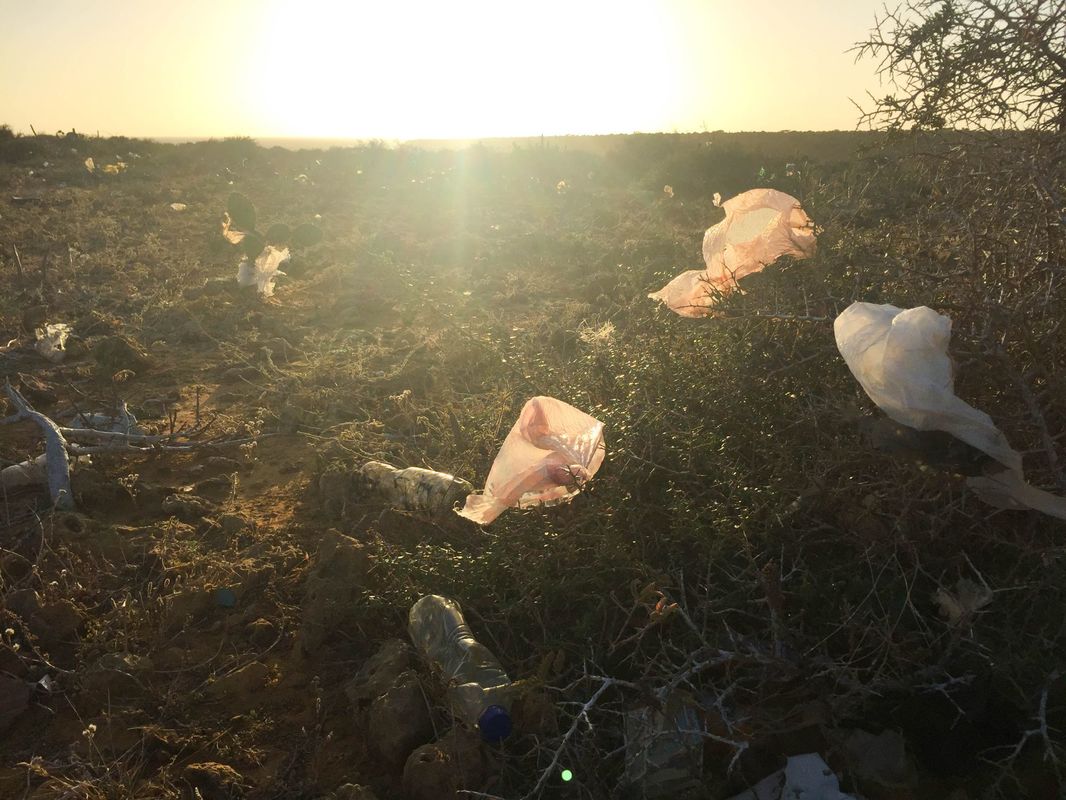
Even in the very small villages one can find shitloads of rubbish. The people here have never learned how to deal with it.
Cabo de la Vela – such a remote place
A small village consisting of one single sandy road, no asphalt, every second house says „restaurante & hospedaje“ – for which people I’m wondering? It seems that the whole region is hoping for more tourists to come – everybody wants to be prepared if they do. A water truck drives slowly through the village, five policemen stand on it. Their job is to fill the black tanks that stand on many houses with water. We check in in one of the guesthouses – one hammock for 12.000 pesos a night, that is less than four Euro. The toilet flush doesn’t work, we need to fill a bucket with water from the ocean which is ten meters away. It is turquoise blue shallow water with small waves behind very narrow beaches offering perfect conditions for kite-boarding –which is more or less the only reason why one stays here for longer than one night. This village has potential though, could be a „backpackers paradise“ in a couple of years. We eat delicious langoustine for dinner – for less than nine Euro.
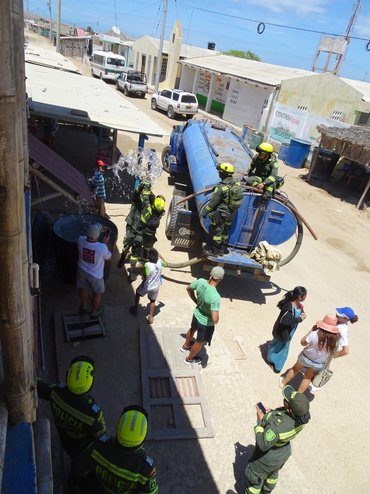
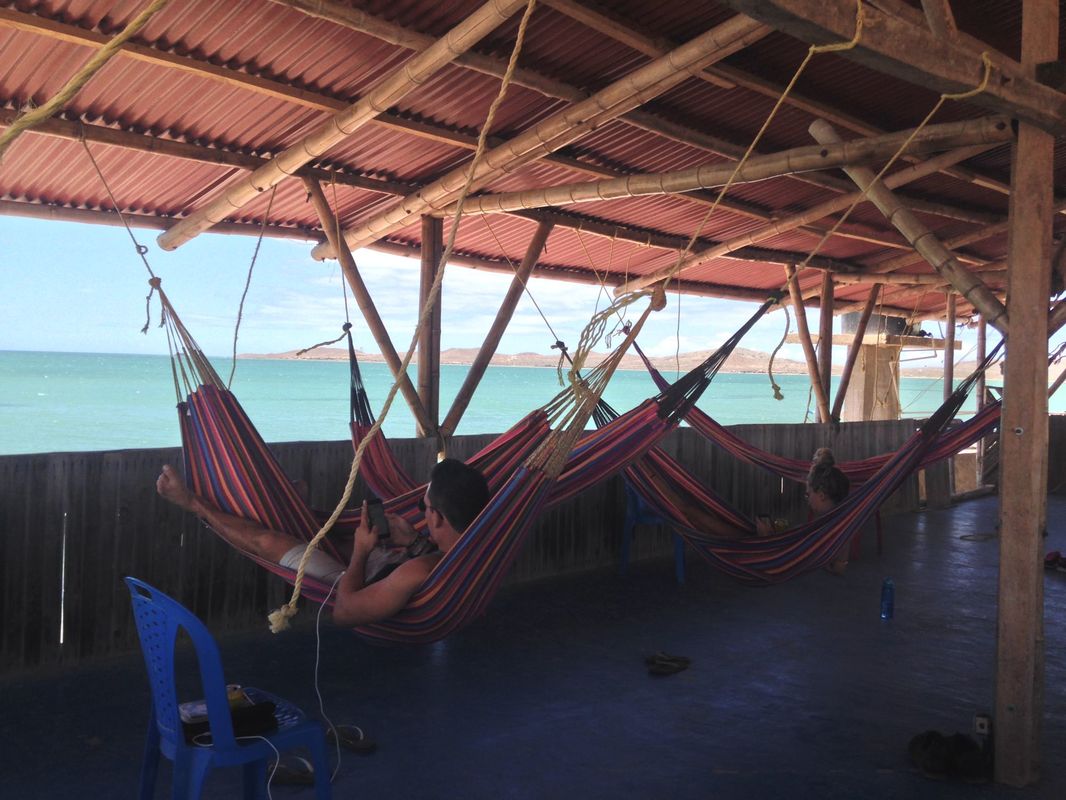
Hammocks for less then 4 Euro a night. A warm breeze and a stunning view at the Caribbean sea is included.
Deeper into the desert
We wake up at 4:30 AM, get picked up by our driver at 5 o’clock. The next three hours make for one of the most challenging rides I’ve ever had. Rough roads, if one wants to call it a road, bumps and wholes that were even for our 4×4 off-road vehicle hard to handle. Everybody holds tight onto something to prevent flying around, for our driver is eager to get to his destination rather sooner than later and loves to play his Vallenato – remember, the Akkordeon? – as loud as his sound system allows. We arrive in Punta Gallinas in the late morning. The bumpy roads continue as we visit the spots that attract the tourists to this area – the most northern point of South America, the view point and the dunes. The latter had been rather spectacular, indeed – desert dunes meet the Caribbean ocean. Swim break for two hours. Then back to the camp for a picturesque sunset at the beach.
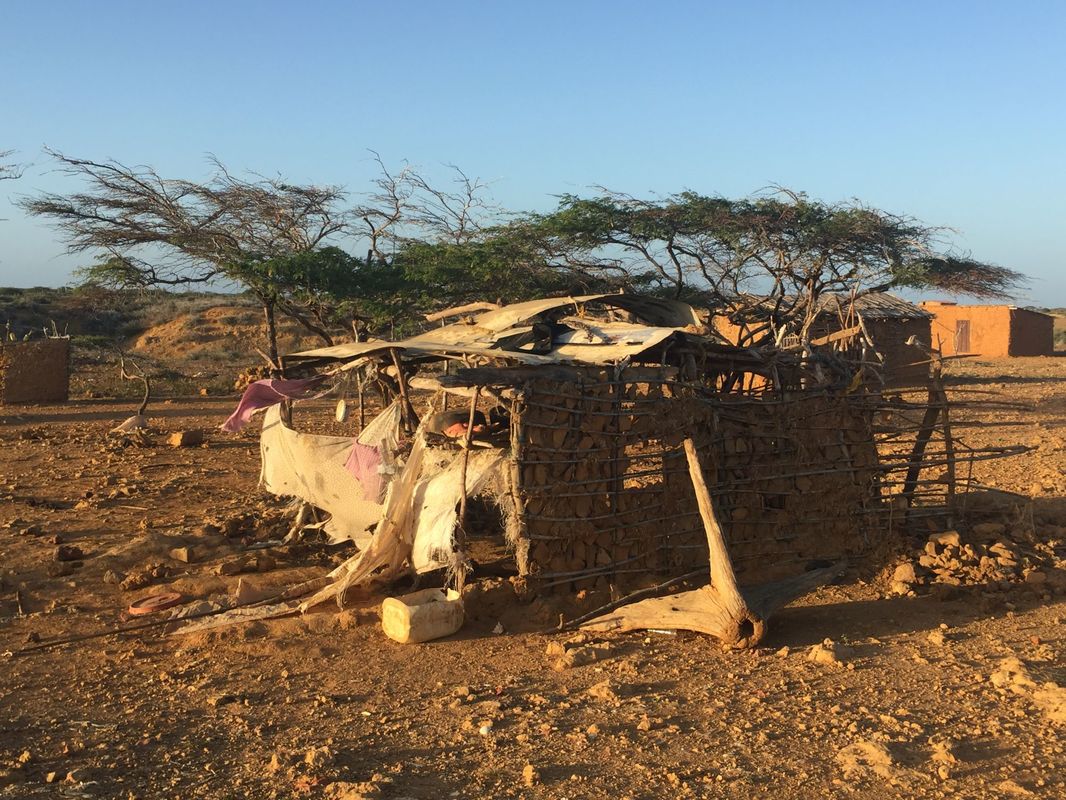
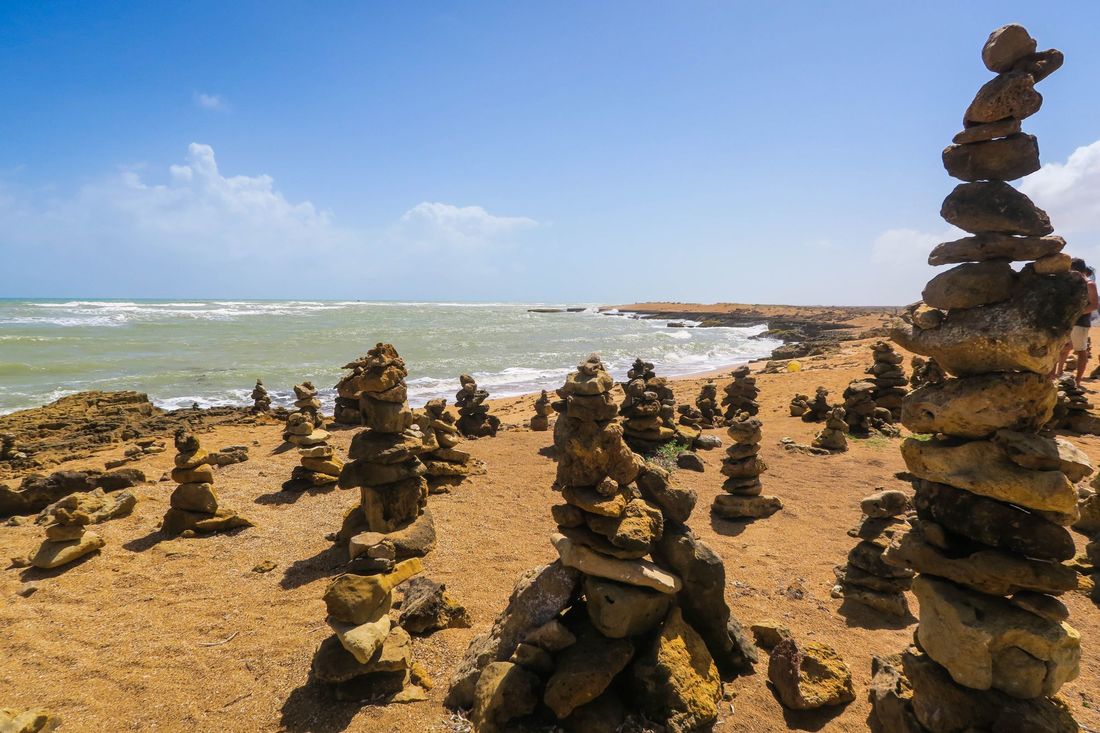
The most northern point of South America: Punta Gallinas
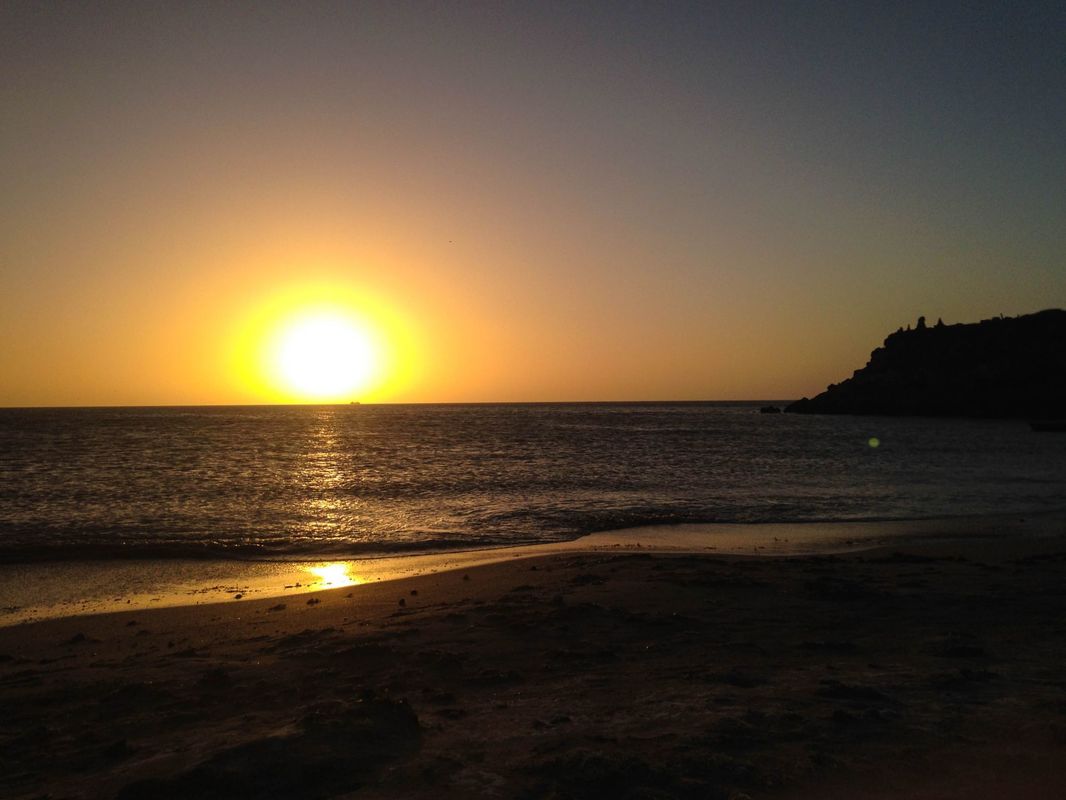
Was it all worth the effort?
Not so much for taking pictures at the most northern point of South America. Neither for swimming next to the dunes, for it’s a lot of effort to get here. But well, the environment is remote and although so dry and sandy, rather spectacular. What left the biggest and most insightful impression on me was foremost something else than nature and tourist spots though. It was a face of Colombia that most visitors don’t get to see. A Colombia that opened my eyes not so much through its beauty and diversity, as it has done before, but rather through real life issues that are so different from mine that it blew my mind.
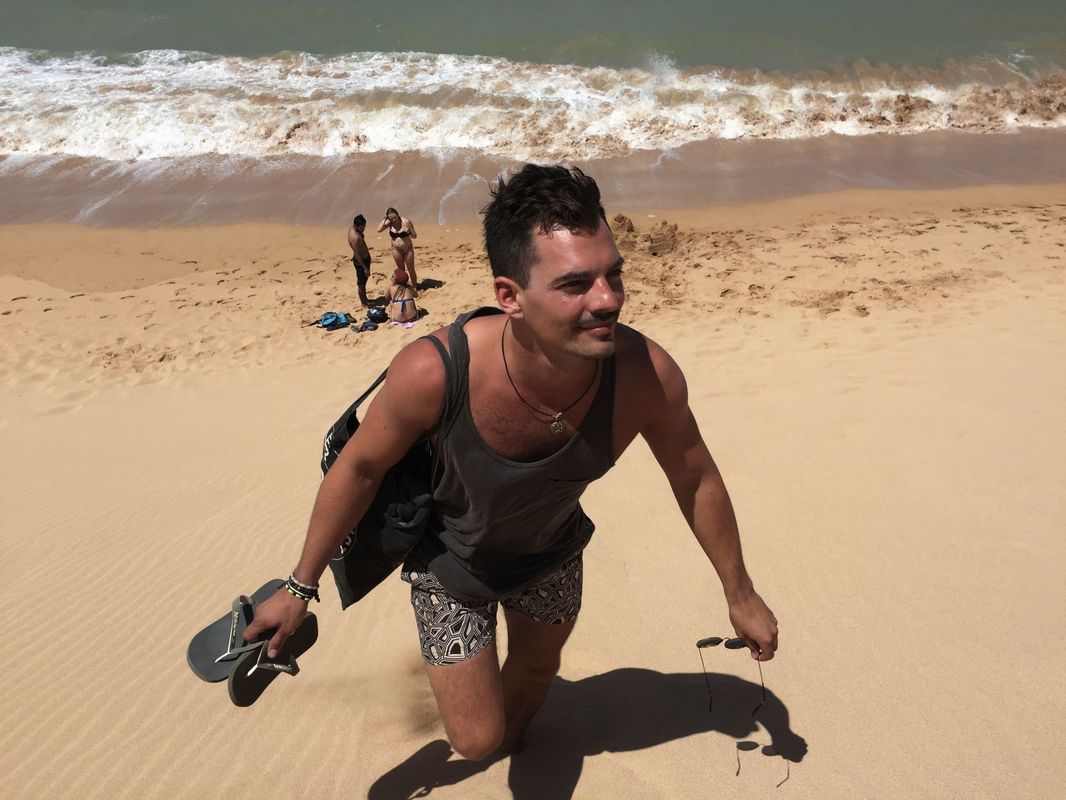
Two nights in the desert
Transportation & tours: 57 Euro
Board, lodging & groceries: 44 Euro
Shift of perspectives: priceless

